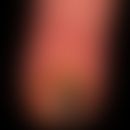DefinitionThis section has been translated automatically.
The LORICRIN gene (Loricrin Cornified Envelope Precursor Protein) is a protein-coding gene located on chromosome 1q21.3. The LORICRIN gene encodes loricrin, a protein that is found as the main protein component of the cornified envelope in terminally differentiated epidermal cells.
General informationThis section has been translated automatically.
Loricrin, the gene product of the same name, is a 26 kDa protein found in keratinocytes. Loricrin is basic, insoluble and consists of many repetitions of glycine/serine/cysteine "loops" interrupted by glutamine- and serine-rich sections. Loricrin is the main component of the so-called "cornified envelope" of keratinocytes and is first expressed in the stratum granulosum. The coding LORICRIN gene is located on chromosome 1q21 and probably consists of two exons. It exhibits several sequence variations, most of which lead to the insertion of four amino acids in the (glycine/serine/cysteine) loops of the loricrin protein. These variations do not appear to have disease value as they do not affect the function of the protein.
Cornification is a specialized mode of the cell death program that occurs exclusively in terrestrial amniotes. Several studies suggest that loricrin (LOR) is an important keratinization effector. The keratin-associated protein loricrin promotes the maturation of the epidermal structure by organizing covalent cross-links and thus provides the epidermis with protection against oxidative injury.
To date, the following clinical pictures have been described with mutations of the loricin gene:
Keratosis palmoplantaris mutilans, Camisa type
the "loricrin keratoderm" (a patchy palmoplantar keratosis associated with mild ichthyosis), first described by Takahashi and colleagues in 1999.
LiteratureThis section has been translated automatically.
- Drera B et al. (2008) De novo occurrence of the 730insG recurrent mutation in an Italian family with the ichthyotic variant of Vohwinkel syndrome, loricrin keratoderma. Clin Genet 73:85-88
- Ishitsuka Y et al. (2022) Loricrin at the Boundary between Inside and Outside. Biomolecules 12:673.
- Kim BE et al. (2008) Loricrin and involucrin expression is down-regulated by Th2 cytokines through STAT-6. Clin Immunol 126:332-337
- Schmuth M et al. (2007) Ichthyosis update: towards a function-driven model of pathogenesis of the disorders of cornification and the role of corneocyte proteins in these disorders. Adv Dermatol 23:231-256.



